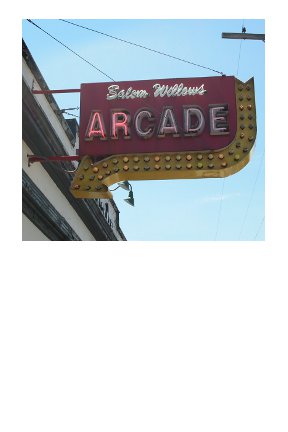The current iteration of Walmart’s Casemate pencils are darn good. Made by Hindustan pencil company they feature a top notch HB core that is dark and smooth. I find the neon and multi-colored packages to be better than the plain yellow pencils. The key to getting good Casemate pencils is to look and make sure the pencils are made in India. I’ve heard other reports that these are often round. The package that I picked up is a hex pencil.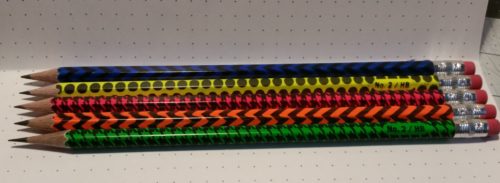
I had hoped to pick up a pack of the plain unprinted neon pencils or a package of the premium tinned pencils. Neither was to be found so I took a chance that the 30 pack of printed neon pencils was as good as the neons.
The packaging for the 30 pack is a pillow box made of stiff clear plastic, with a bit of foam at the base to protect the points, and a thick label wrapped around the belly. In a pinch it could suffice as a decent pencil case. Each tube has 6 pieces of 5 colors- pink, orange, yellow, green, and blue. All are neon except the blue, which in my package is a royal blue color. Each 30-pack is $3.24, which is roughly 11 cents per pencil.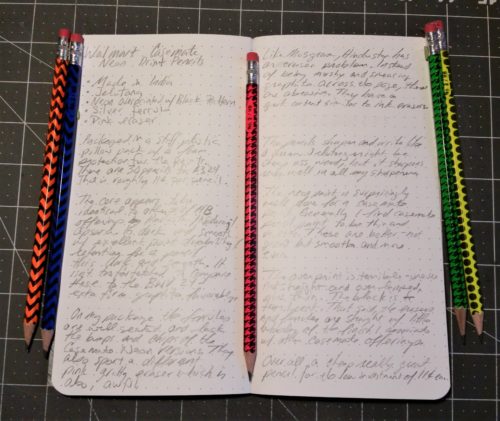
The pencils themselves sport a standard Hindustan HB core. That is to say it’s silky smooth across most papers and is nicely dark. I’ve found very occasional bits of grit in some of my pencils, but this is rare and to the same extent that I find them in much more expensive pencils. The core has excellent point durability/retention. I get a few pages from a sharpening with my Carl A5. The wood is jelutong which sharpens well but has no distinct odor that I can detect*. It is lightweight and I have grown fond of the look of this wood. It ranges from pinkish tan to nearly white to speckled. All of my sharpeners handle it well.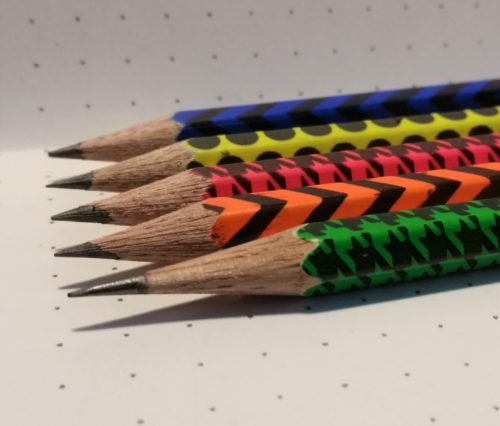
The paint appears to be a layer of white, with neon atop that with an overprinting of a very thin coating of black. The black is nearly see through in some areas and the neon colors definitely pop through the black patterns. The black patterns are a pox upon an otherwise lovely pencil. On my pencils- every single pencil the printing is crooked, the grade designation is not only off center of a side, it’s often printed on a hex point and at an angle. Further the crooked printing is overlapped in some areas and not others. The patterns are also everso slightly stretched on some of the pencils. The images I’ve included in this review do not do justice to how truly abominable the print job is. It’s atrocious. It is laugh worthy. It is, as my Grandmother would say, ugly as sin. 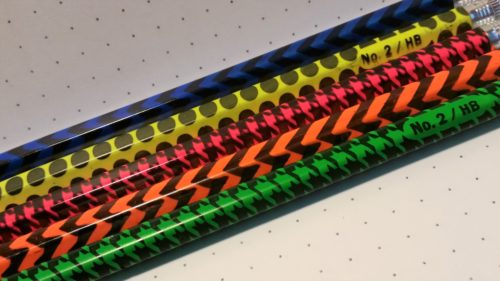
The silver ferrules are affixed well to the pencil and hold a pink eraser. The erasers are typical of Hindustan and Casemate awful. This batch of erasers is stiff and gritty. In use they have a hard time removing graphite from even the smoothest of pages, and yet seem to lift the fibers of the page. Through repeated use I could see these erasers tearing a hole in the paper. They remind me of the old grey ink eraser like the Papermate Union.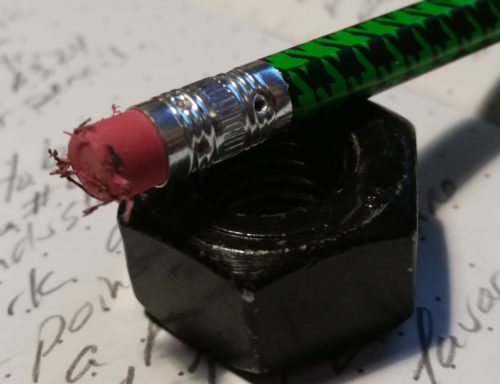
In short these are great pencils for a very low investment. The core is wonderful, its’ just the exterior that makes these look awful.
